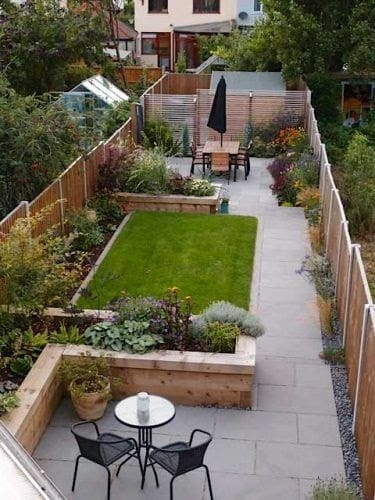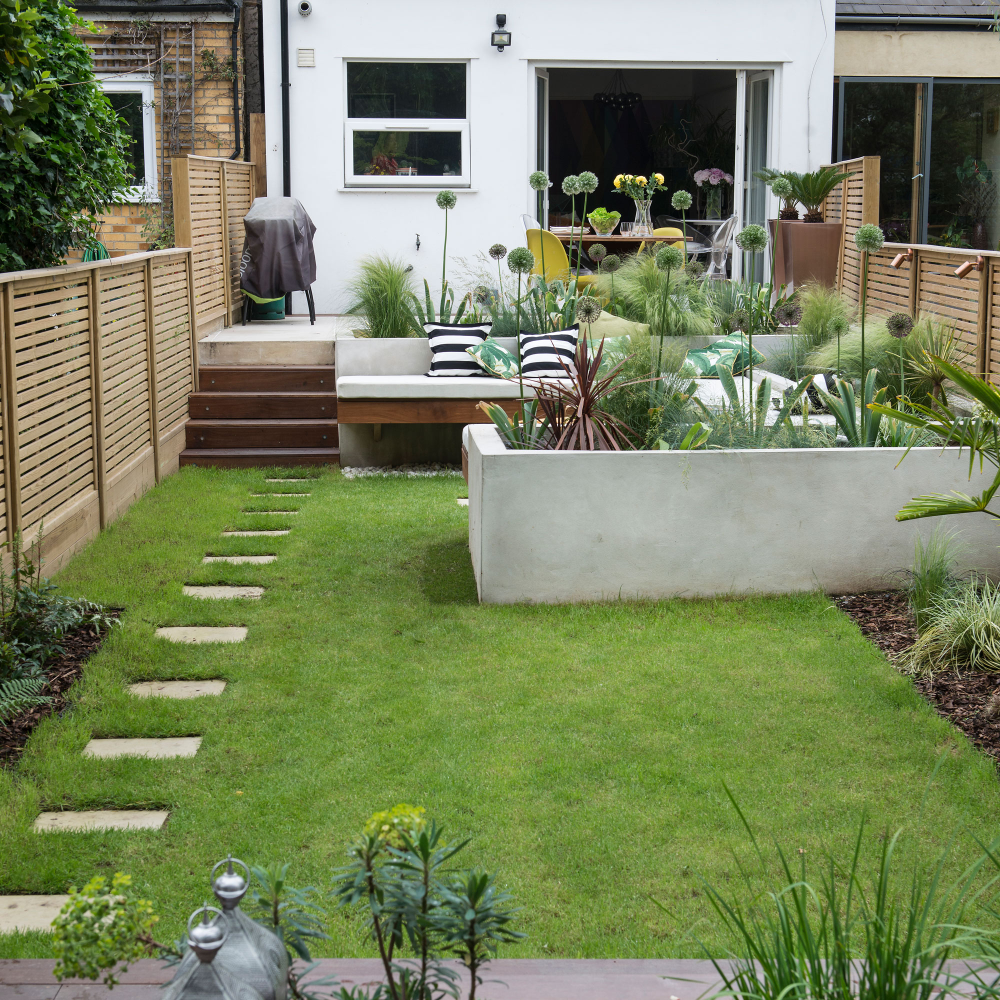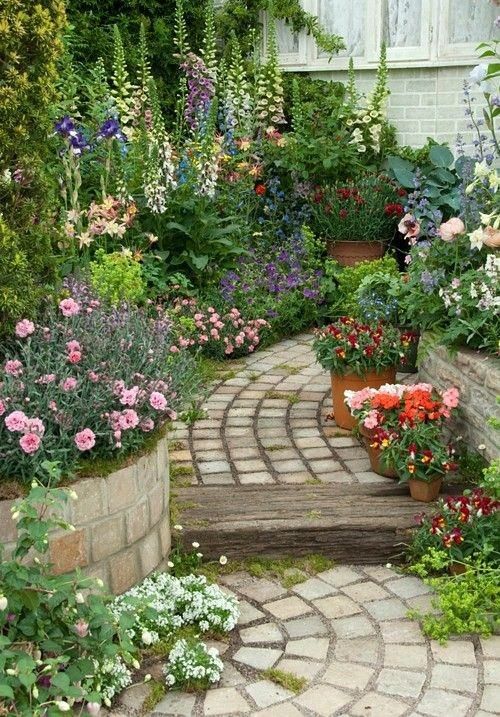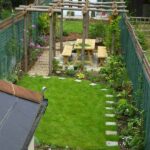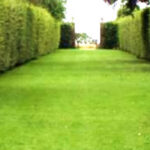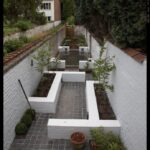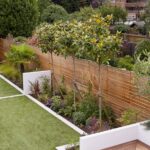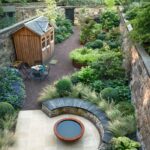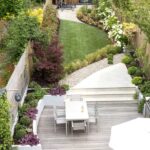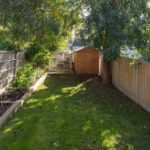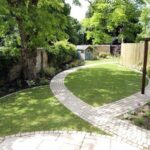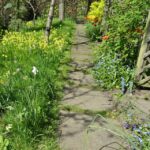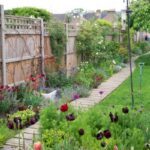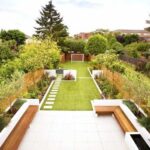When designing a garden in a long narrow space, it’s important to make the most of every inch of available space. One idea for maximizing the area is to create different zones within the garden. For example, you could have a dining area at one end of the garden, a vegetable patch in the middle, and a relaxing seating area at the other end. This way, you can make the most of the space and create different areas for different purposes.
Another idea for a long narrow garden is to create a winding path that leads through the space. By creating a meandering path, you can create a sense of journey and discovery as visitors walk through the garden. You can also use the path to divide the space into different sections, creating a sense of different “rooms” within the garden.
Vertical gardening is a great idea for a long narrow garden, as it allows you to make the most of the available space without taking up too much room on the ground. You could install trellises, hanging baskets, or planters on walls or fences to add interest and depth to the garden. Vertical gardening also allows you to grow a wider variety of plants in a small space.
When designing a long narrow garden, it’s important to consider the sightlines and views within the space. You could create focal points at different points along the length of the garden to draw the eye and create visual interest. This could be a piece of art, a water feature, or a stunning plant display. By creating focal points, you can break up the space and create a sense of flow and harmony in the garden.
To make the most of a long narrow garden, you could also consider using raised beds or planters. By raising the planting areas off the ground, you can add depth and interest to the space. Raised beds also make it easier to maintain the garden, as they reduce the need for bending and stooping. You could use raised beds to grow vegetables, flowers, or even small trees and shrubs.
Finally, when designing a garden in a long narrow space, it’s important to choose the right plants for the conditions. You’ll want to select plants that will thrive in the available light, soil, and climate. Consider the height, spread, and maintenance requirements of each plant, and choose a mix of plants that will provide year-round interest. By carefully selecting the right plants for your garden, you can create a beautiful and functional outdoor space that makes the most of the available space.
